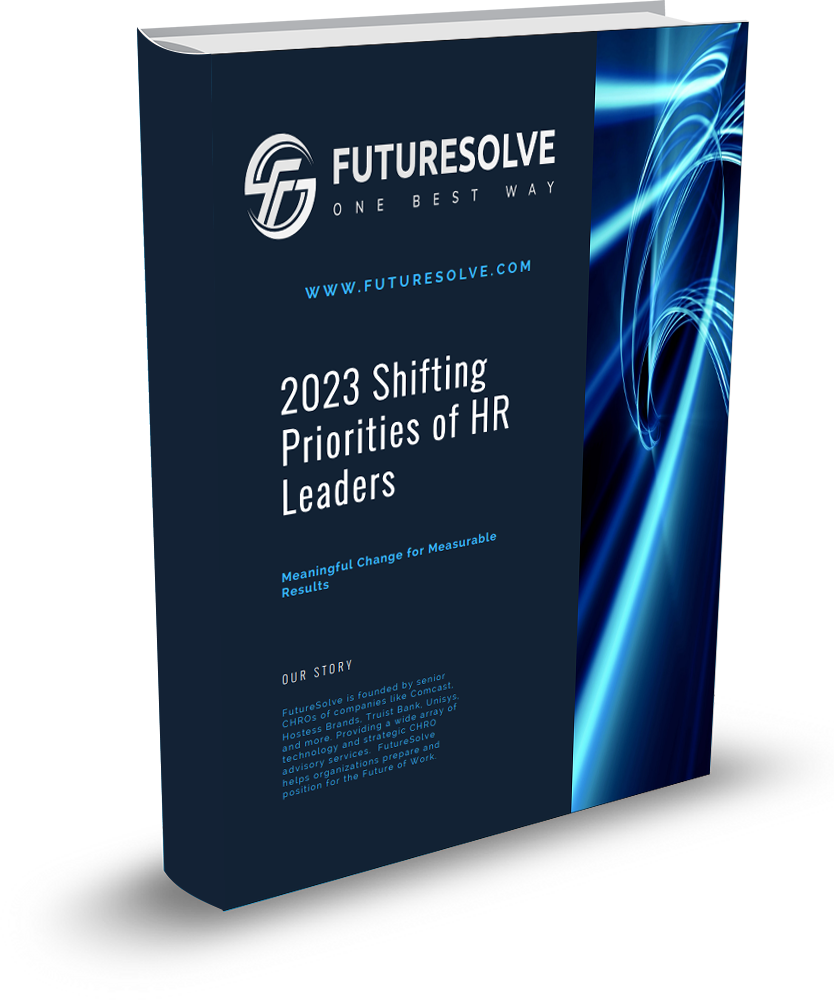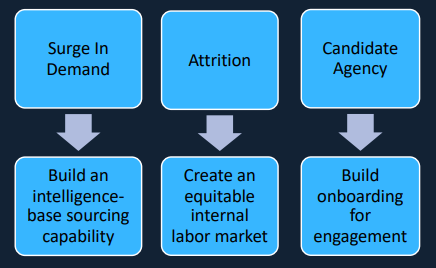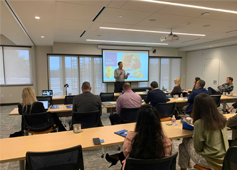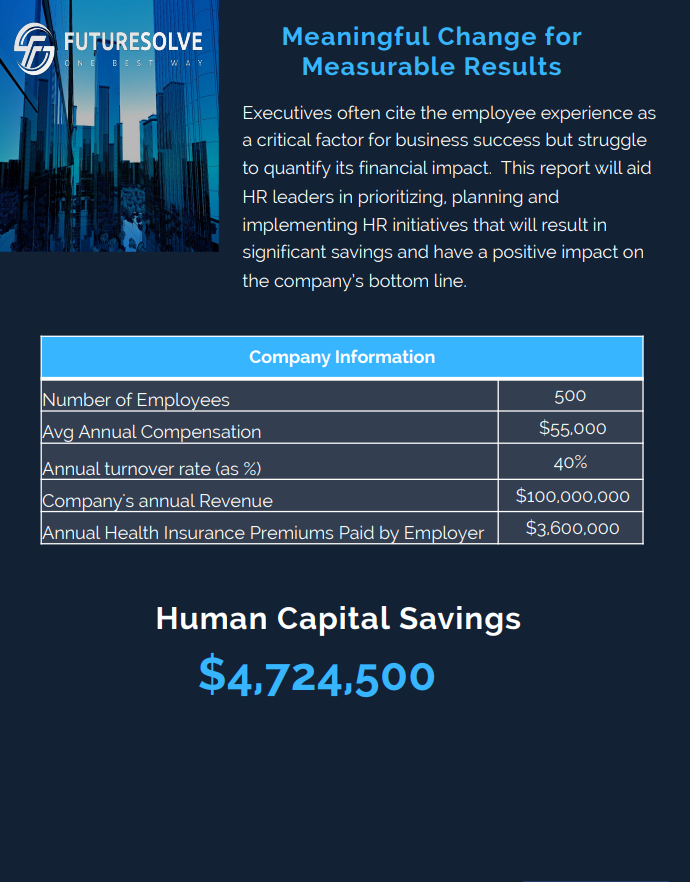2023 Shifting Priorities of HR Leaders

















2022 RETROSPECTIVE
In 2022 the HR leader’s top priorities were centered around building critical skills & competencies, organizational design and change management, and the current and future leadership bench. These priorities were driven by the increase in hybrid work, rising turnover and competition for talent and pressures to make progress on DEI.
2022 HR Leaders Priorities
- 59% Building Critical Skills and Competencies
- 48% Organizational Design and Change Management
- 45% Current and Future Leadership Bench
- 42% Future of Work
- 35% Diversity, Equity and Inclusion
2023 SHIFT
In 2023, we see a shift in HR priorities as leader and manager effectiveness, organizational design and change management and the employee experience are viewed as leading challenges.
These priorities are being propelled to the top as inflation rises, talent becomes scarce and expensive, and global supply chains remain volatile. HR leaders must cultivate a positive culture and employee experience while transforming HR to be more automated and digital. Employee expectations impact retention and attraction as employees are demanding more flexibility, personalized experiences, and a desire for purpose.
2022 HR Leaders Priorities
- 60% Leadership and Manager Effectiveness
- 53% Organizational Design and Change Management
- 47% Employee Experience
- 46% Recruiting
- 42% Future of Work
1
LEADER & MANAGER EFFECTIVENESS
As the work environment changes, so must our approach to leadership. Leaders have a core responsibility to model desired behaviors, allowing employees to feel safe to express themselves. Their support of teams and helping employees address life’s needs has become more important than ever as the workforce continues to work in remote environments.
Ensuring results requires leaders to adopt
individualized, flexible workflows. This work-life fusion has redefined the leader-employee dynamic into a more human relationship. The human-centric leader is authentic, empathetic, and adaptive.
Human-Centered Leadership
- Ability to build trust and create a
- psychologically safe workplace
- Ability to recognize and align meaning and
- purpose between people and organization
- Ability to Grow and develop people through coaching and mentoring
- Ability to empathize and act accordingly
2
ORGANIZATIONAL DESIGN AND CHANGE MANAGEMENT
As a result of continuous disruption from digital transformations, economic uncertainty and political tensions, CHROs are prioritizing organizational design and change management. High employee “change fatigue” and increased work friction are correlated with lower intent to stay with the organization. Adopting an open- source change strategy can support employees though periods and uncertainty and reduce change fatigue.
An open-source change strategy is collaborative, involving employees throughout the change process, instead of telling them what will happen. In this model, employees co-create change decisions, engaging as active participants in making and shaping change decisions.
Employees own implementing the planning and they talk openly about the change. Open-source change strategies are 14x more likely to achieve change success.
3
EMPLOYEE EXPERIENCE
Compelling careers are critical for retention. Employees leave jobs for better development opportunities at similar rates as they leave for higher compensation. Changes in today’s work environment have created new career imperatives for HR and changing the traditional HR approach is essential.
The future model centers around creating career growth moments. The conventional methodology centered around employees finding in-role opportunities relevant to potential roles. HR would communicate the role benefits and requirements and then support managers to identify internal roles. Since employees are now spending 65% less time in offices, the experience of career options are less visible, and employees are not prepared for future roles. In setting their career trajectory, employees should be provided with career opportunities to experience career options for greater understanding. A career opportunity could be any opportunity that takes the employee closer to their career goal. This might be a new role, training, participating in projects, or even shared colleague examples to show there are many routes to career progress.
4
04 RECRUITING
As we ease out of the ”Great Resignation”, 85% of companies continue to actively hire.
Unemployment is at the lowest rate it has been in 50 years, making high-quality talent in today’s labor market scarce. To complicate matters, retaining talent in hybrid and remote work environments, where employees feel less connected to the company’s culture, remains a struggle. To address these challenges, HR leaders are employing three main strategies for more effective recruitment; leveraging labor market data to find accessible talent form new sources, building an equitable internal labor market, and developing onboarding programs that promote new hire engagement through emotional proximity.


5
04 RECRUITING
In today’s turbulent environment, workforce planning (WFP) strategies need to change. Former assumptions no longer hold true resulting in WFP being disconnected from today’s reality.
Instead of assuming we can predict the future, we need a new approach that unlocks new strategies
Match WFP to Today’s Reality


More Resources


Blogs






Leadership Videos


Events


News


